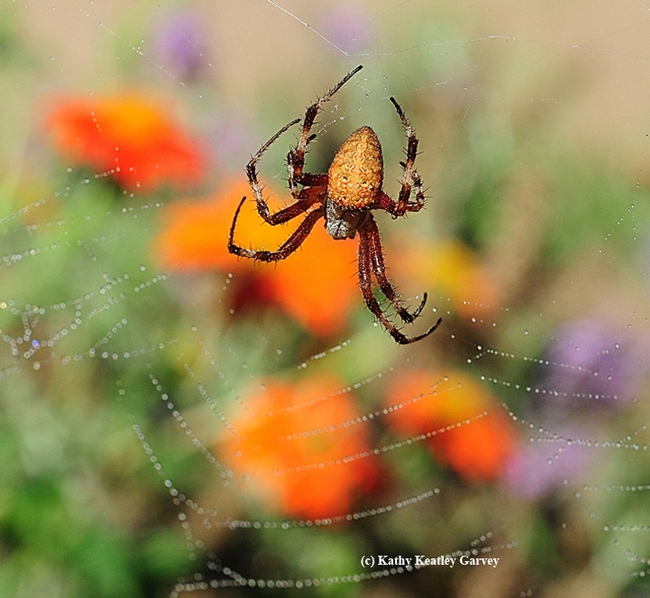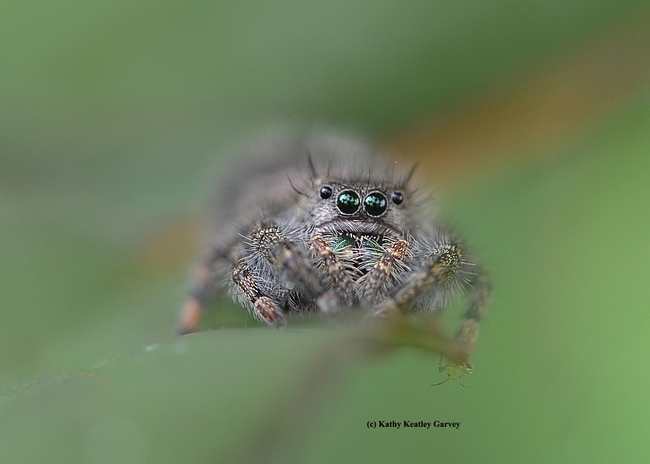Posts Tagged: spider
Got Legs? Eight of Them?
Got legs? Got eight legs? No, not eight unless you're a spider (arachnid). If you're human, you can seek out the Bohart Museum of...

UC Davis student Jakob Lopez, a Bohart Museum employee, wearing the glow-in-the-dark trapdoor spider T-shirt. The cost is $22 plus tax for adult sizes and $18 plus tax for youth. Proceeds support the museum.
Celebrating the Crab Spider in Arachtober
It's Arachtober and that means celebrating arachnids for the entire month of October. Well, we ought to celebrate them year around, but October...

A crab spider eating a lygus bug, an agricultural pest in a Vacaville garden. (Photo by Kathy Keatley Garvey)
Saga of the Spider and the Bee
(Continued from the July 13th Bug Squad) Our resident crab spider, family Thomisidae, appears to be an extremely poor hunter. She...

The resident crab spider nails a honey bee, as another bee continues to forage in the lavender. (Photo by Kathy Keatley Garvey)

A freeloader fly (family Milichiidae, probably genus Desmometopa), invites itself to dinner. No reservations required. (Photo by Kathy Keatley Garvey)

As the resident crab spider eats its prey, another honey bee arrives to forage on the lavender. (Photo by Kathy Keatley Garvey)
The Spider and the Bee
A crab spider, family Thomisidae, lies motionless in a patch of lavender, waiting to ambush a honey bee. So here I am,...

A crab spider lies in wait, as a honey bee nectars on a lavender blossom. (Photo by Kathy Keatley Garvey)

The honey bee takes flight, out of reach of the crab spider. (Photo by Kathy Keatley Garvey)

You missed me, Mr. Crab Spider. You missed me. (Photo by Kathy Keatley Garvey)
How Many Spiders Have You Saved Today?
It's National Save-a-Spider Day. I did not save a spider today. I did not save one yesterday, either. Or the day before. That's because I did not...

A redfemured spotted orbweaver, Neoscona domiciliorum, visiting a pollinator garden in Vacaville, Calif. (Photo by Kathy Keatley Garvey)

A jumping spider eyes the photographer. (Photo by Kathy Keatley Garvey)

